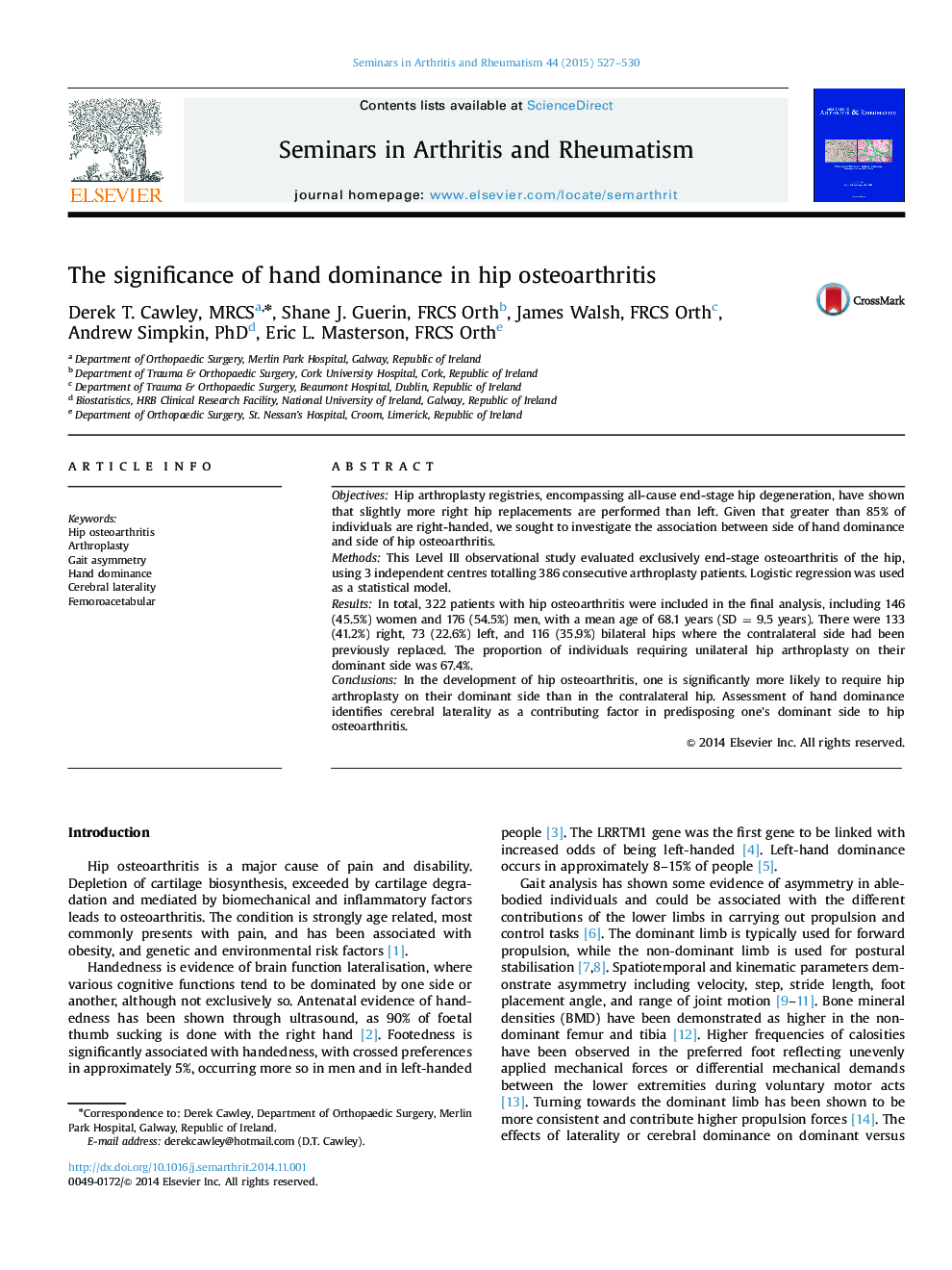| Article ID | Journal | Published Year | Pages | File Type |
|---|---|---|---|---|
| 2771349 | Seminars in Arthritis and Rheumatism | 2015 | 4 Pages |
ObjectivesHip arthroplasty registries, encompassing all-cause end-stage hip degeneration, have shown that slightly more right hip replacements are performed than left. Given that greater than 85% of individuals are right-handed, we sought to investigate the association between side of hand dominance and side of hip osteoarthritis.MethodsThis Level III observational study evaluated exclusively end-stage osteoarthritis of the hip, using 3 independent centres totalling 386 consecutive arthroplasty patients. Logistic regression was used as a statistical model.ResultsIn total, 322 patients with hip osteoarthritis were included in the final analysis, including 146 (45.5%) women and 176 (54.5%) men, with a mean age of 68.1 years (SD = 9.5 years). There were 133 (41.2%) right, 73 (22.6%) left, and 116 (35.9%) bilateral hips where the contralateral side had been previously replaced. The proportion of individuals requiring unilateral hip arthroplasty on their dominant side was 67.4%.ConclusionsIn the development of hip osteoarthritis, one is significantly more likely to require hip arthroplasty on their dominant side than in the contralateral hip. Assessment of hand dominance identifies cerebral laterality as a contributing factor in predisposing one’s dominant side to hip osteoarthritis.
